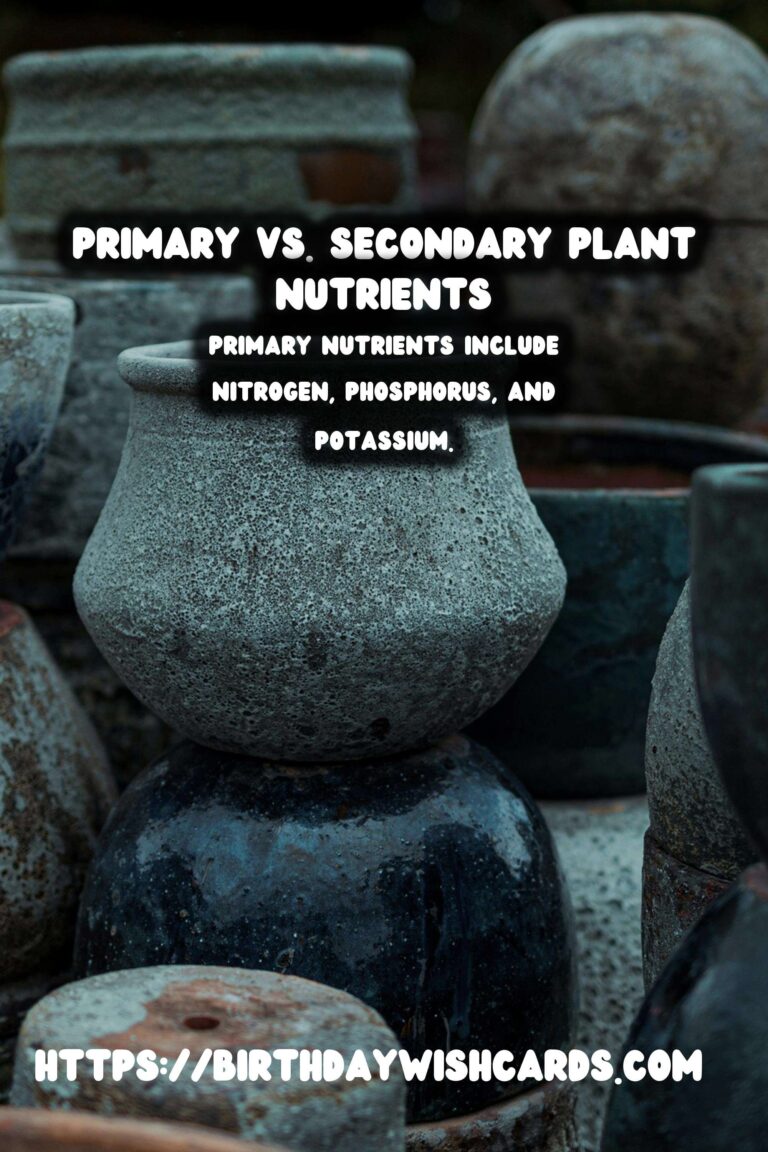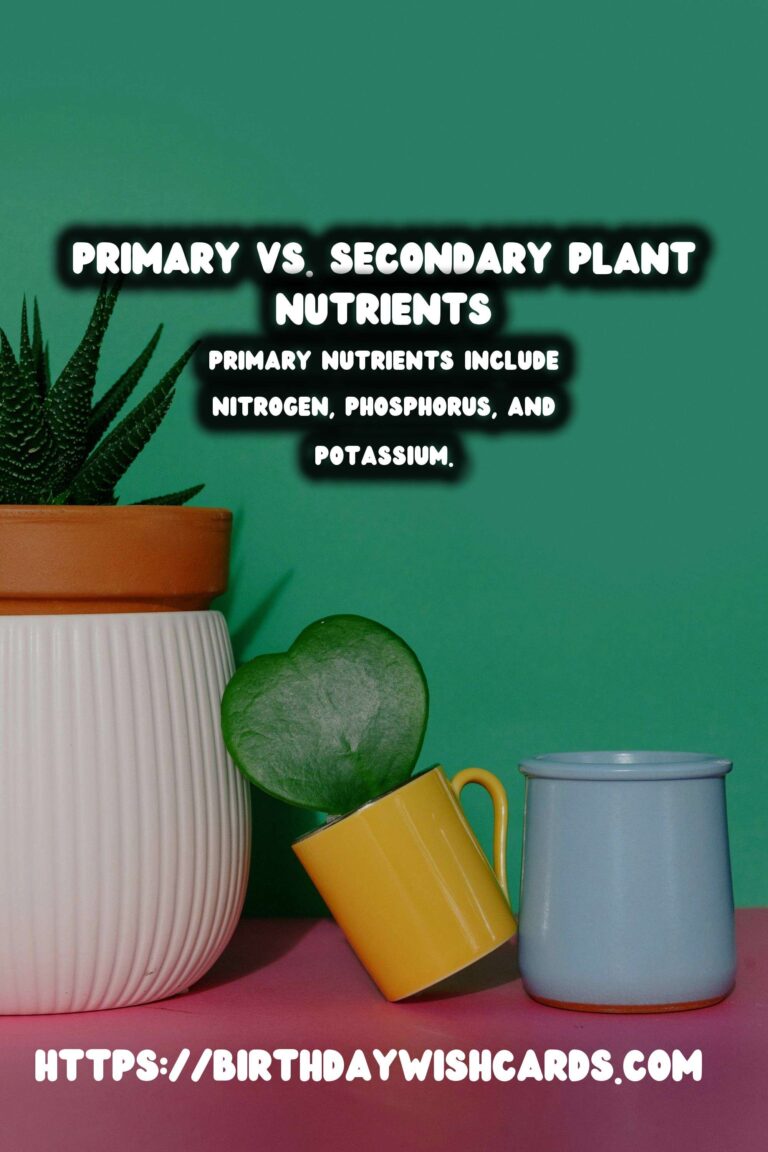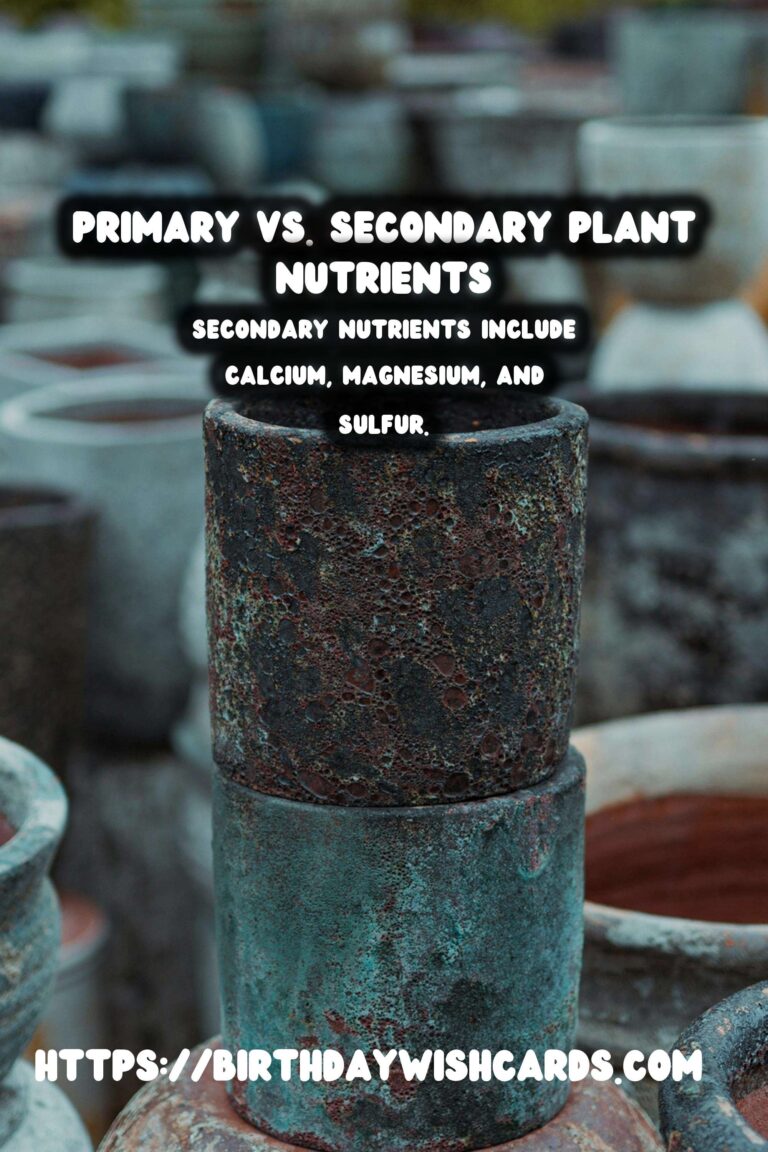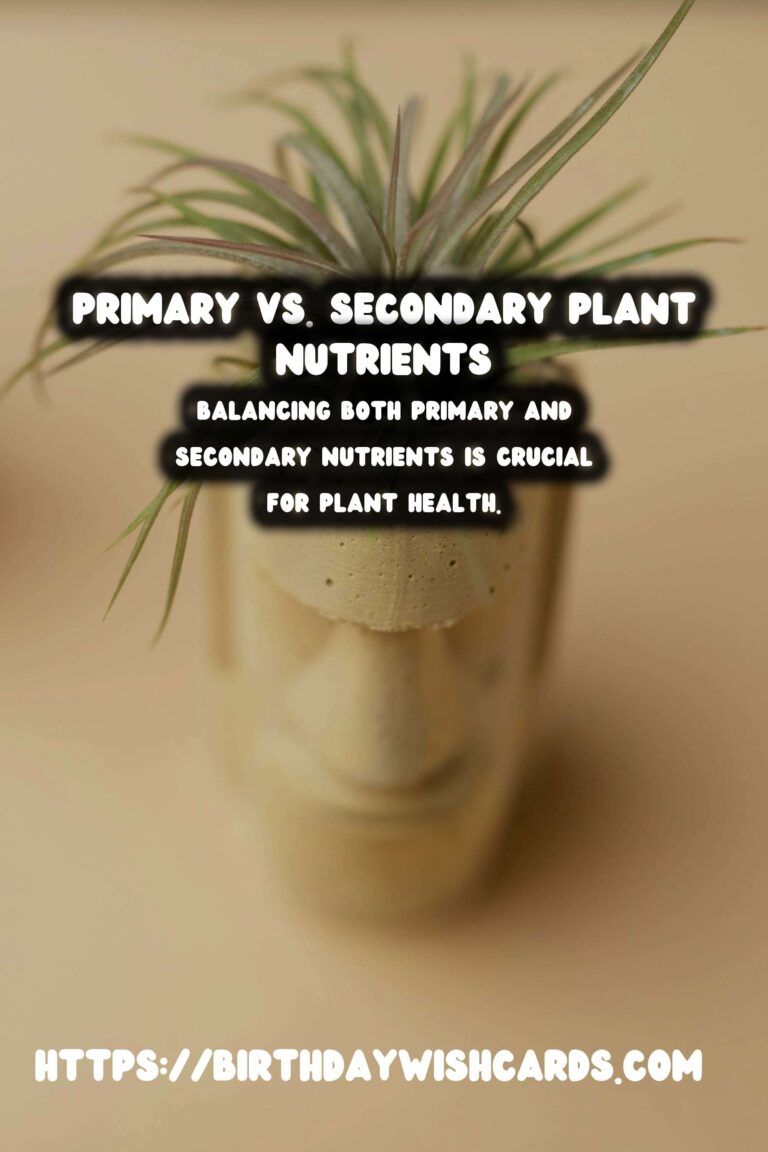
Plants, much like humans, require a variety of nutrients to thrive and grow. Understanding the difference between primary and secondary plant nutrients is crucial for anyone involved in gardening or agriculture. In this article, we will delve into what these nutrients are, their functions, and why they are important for plant health.
What Are Plant Nutrients?
Plant nutrients are substances that provide essential elements for the growth and development of plants. These nutrients can be divided into two main categories: macronutrients and micronutrients. Within macronutrients, we have primary and secondary nutrients, which play different roles in plant health.
Primary Nutrients
Primary nutrients are the most critical for plant growth and are required in larger quantities than secondary nutrients. The primary nutrients are nitrogen (N), phosphorus (P), and potassium (K). These are the key components of most fertilizers and are often referred to as NPK. Each of these elements plays a distinct role in plant development:
- Nitrogen (N): Essential for the growth of leaves and stems. It is a major component of chlorophyll, the compound that plants use to photosynthesize and convert sunlight into energy.
- Phosphorus (P): Vital for root development and flowering. It is a component of ATP, the energy currency of cells, and is crucial for energy transfer within the plant.
- Potassium (K): Important for overall plant health. It helps in water regulation, enzyme activation, and resistance to diseases.
Secondary Nutrients
Secondary nutrients are required by plants in smaller amounts compared to primary nutrients, but they are still essential for optimal growth. The secondary nutrients include calcium (Ca), magnesium (Mg), and sulfur (S). Here’s how each contributes to plant health:
- Calcium (Ca): Crucial for cell wall structure, stability, and transport of other nutrients.
- Magnesium (Mg): A central component of the chlorophyll molecule and is necessary for photosynthesis.
- Sulfur (S): Important for the synthesis of amino acids and proteins.
Importance of Balancing Nutrients
While primary nutrients are often the focus in fertilization practices, balancing both primary and secondary nutrients is crucial for maintaining plant health. An imbalance can lead to nutrient deficiencies, affecting plant growth and productivity.
Nutrient management involves understanding the soil’s nutrient content and making necessary amendments. Soil testing can help determine the nutrient levels and guide the application of fertilizers. Over-fertilization or under-fertilization can both have detrimental effects on plants.
Signs of Nutrient Deficiency
Identifying nutrient deficiencies in plants can be challenging but is an essential skill for gardeners and farmers. Here are some common signs:
- Nitrogen Deficiency: Yellowing of older leaves and stunted growth.
- Phosphorus Deficiency: Dark green or purplish foliage and poor flowering.
- Potassium Deficiency: Browning of leaf edges and weak stems.
- Calcium Deficiency: Deformed new growth and blossom end rot in fruits.
- Magnesium Deficiency: Yellowing between leaf veins, starting with older leaves.
- Sulfur Deficiency: Yellowing of young leaves and reduced growth.
Conclusion
Understanding the difference between primary and secondary plant nutrients is essential for effective plant care. By recognizing the roles of each nutrient and ensuring a balanced supply, gardeners and farmers can promote healthy plant growth and maximize agricultural productivity. Regular soil testing and mindful fertilization practices are key strategies in achieving this balance.
Whether you are a seasoned gardener or a novice, understanding and managing plant nutrients will help you grow healthier and more productive plants.
Plants require a variety of nutrients to thrive and grow. Primary nutrients include nitrogen, phosphorus, and potassium. Secondary nutrients include calcium, magnesium, and sulfur. Balancing both primary and secondary nutrients is crucial for plant health. Identifying nutrient deficiencies in plants can be challenging but is an essential skill. 









#PlantNutrients #Gardening #Agriculture #PlantHealth #SoilManagement




